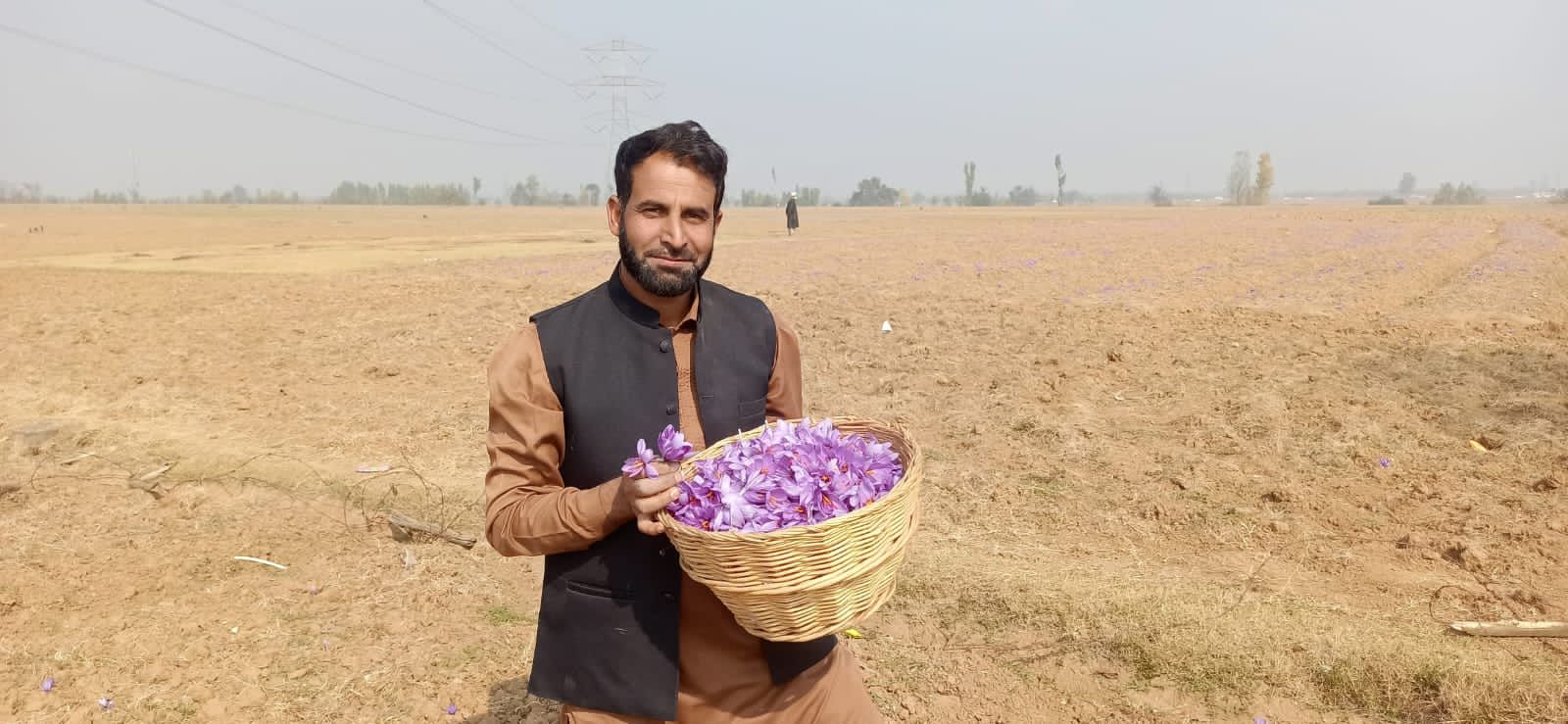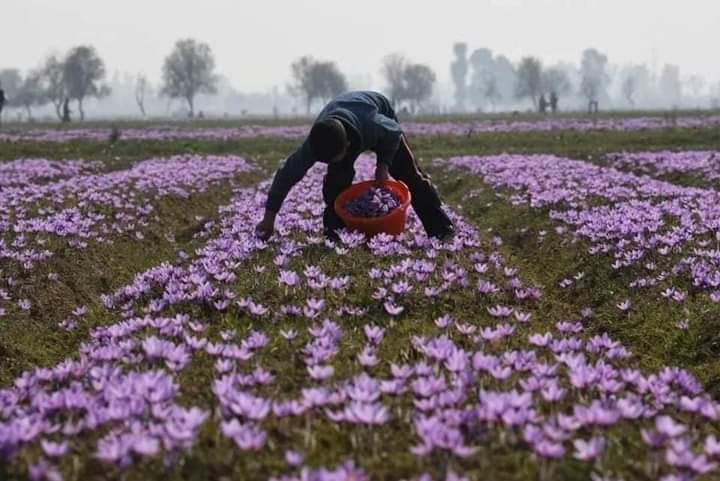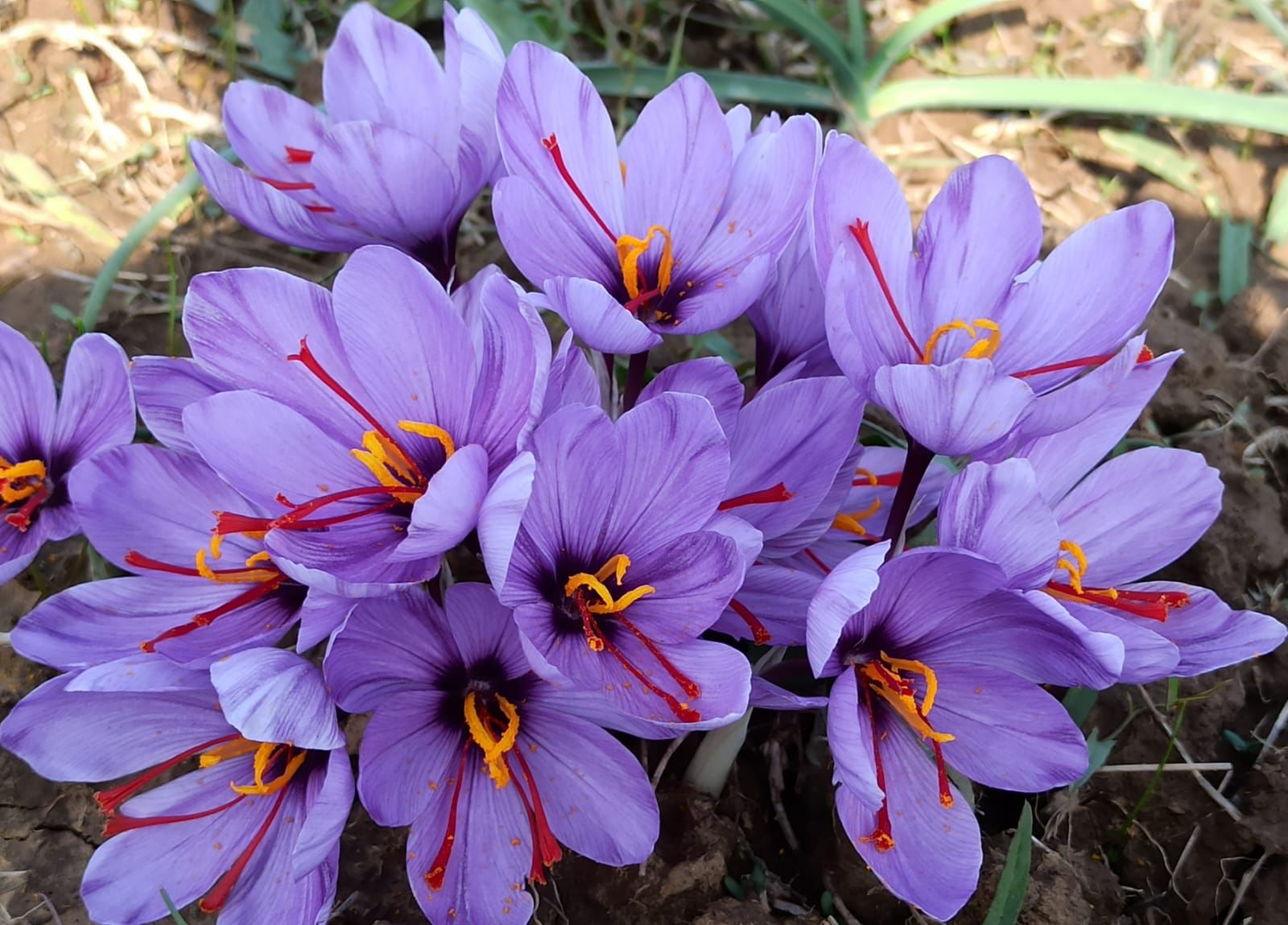On a misty December noon, the vast fields of saffron in Pampore unveiled a tale of crumbliness and apprehension, with 33-year-old Irshad Dar, a steward of the cherished spice, at its center.
Settled in the saffron blooms, Irshad's hands cradled the very soil he had nurtured with unwavering care since the tender age of 13.
A hushed conversation among four farmers began, revealing an arson and sending ripples through the heart of Kashmir's identity.

Irshad, his brow furrowed, absorbed the unsettling tales spun by his fellow cultivators- the sacred saffron, symbolizing Kashmir, had found an unlikely home in the distant corners of India's Northeast.
"They take bulbs from here, they also take the Pampore soil to guise saffron as if they are growing it in Kashmir," disclosed one of the farmers.
For Irshad, each word resonated with the weight of betrayal, leaving him to grapple with the sense that something precious had been clandestinely extracted from Kashmir’s soul.

The mist, now seemingly conspiratorial, hung in the air, mirroring the uncertainty enveloping Irshad's thoughts.
"The plantation of saffron in Northeast India will lack basic natural necessities," Irshad lamented.
"It'll be small and thin, barely of any use. A replica, devoid of the diligence our local cultivation enjoys due to the absence of natural karewas," he added.
Kashmir's saffron, cultivated on the wudur, unique alluvial deposits formed around four million years ago, distinguishes itself from imitations.

However, Tahir, another young saffron farmer, held private brokers and local farmers responsible for this unsettling shift, asserting that Kashmir's prized crop was being pilfered and transported to other regions.
"Some private dealers facilitate this shift, coaxing Kashmiris to provide soil and bulbs for export outside the valley," Tahir revealed.
Some cultivators are driven by greed, making a profit by selling our soil and saffron bulbs without considering the potential devastating consequences that lie ahead," he added.
Despite the success of their cultivation, he acknowledged that these imitations would never match the authenticity of Kashmir's saffron.
"People will eventually come back to us for the original saffron," he asserted optimistically.
Reports indicated that over 225 kg of Kashmiri saffron seeds were sold to Indian Northeast states for 'experimental purposes' in the past October.
Saffron, known as 'Red Gold,' stands as the most expensive spice globally, produced exclusively in the Kashmir valley.
Approximately 22,000 families are associated with saffron cultivation in Kashmir, with its GI tag endorsing its superior terrestrial origin.
Simultaneously, pilot projects for saffron cultivation have sprouted in Northeast Indian states such as Kerala, Madhya Pradesh, Sikkim, Gujarat, and Maharashtra.
Nearly a thousand farmers from Northeast India have aligned with this cultivation project to dedicate 500 acres of land to saffron.
When contacted, Chowdhary Mohammad Iqbal, Director of Agriculture Kashmir, revealed, "There is only one saffron farm functional in Northeast Sikkim."
He explained that the farm, established under an R&B project, was later closed following the intervention of the State Agricultural Department, J&K.
Within the shadows of imitation, hope perseveres, echoing a conviction that the authentic essence of Kashmir's saffron will eventually emerge triumphant.